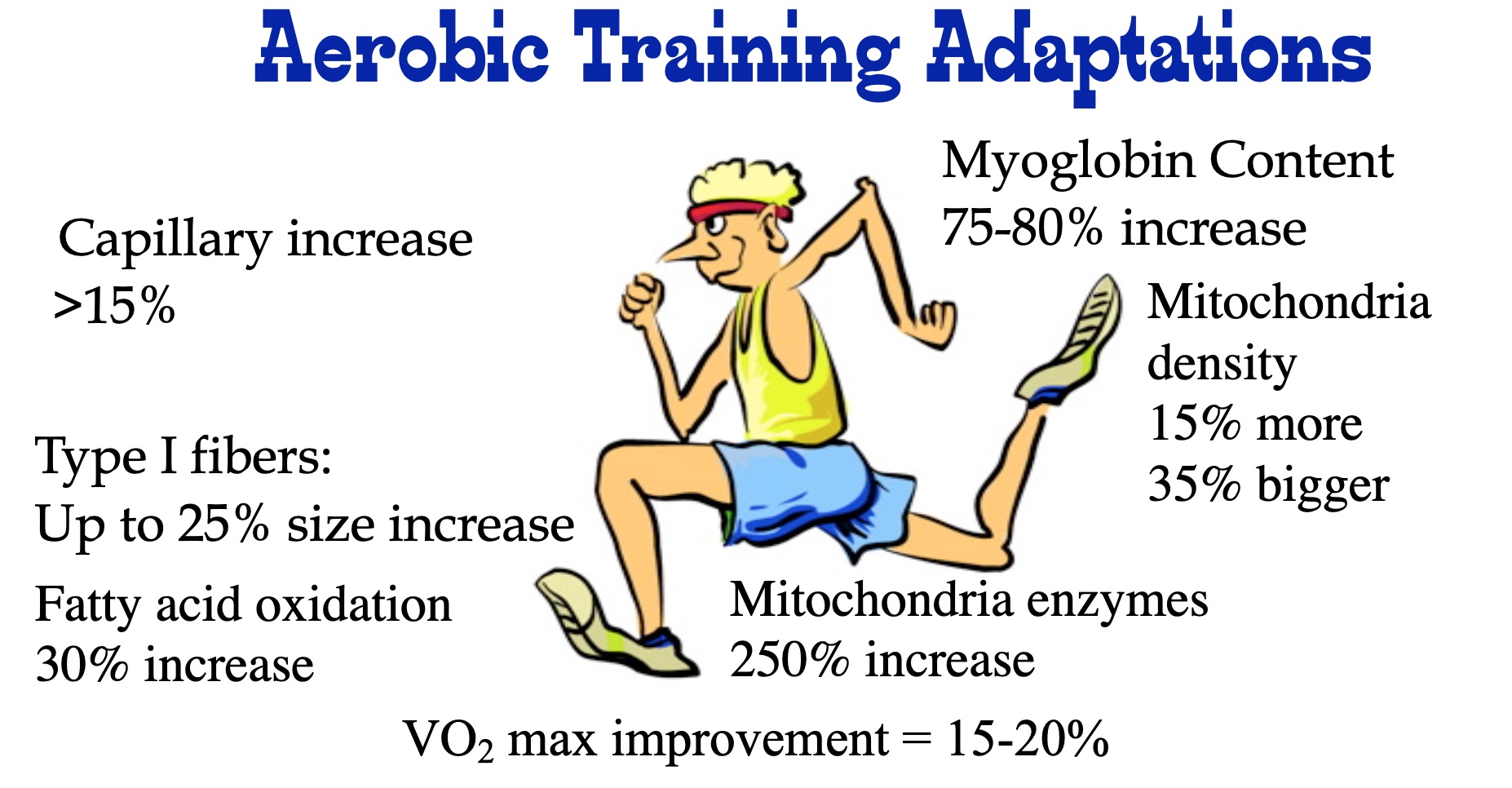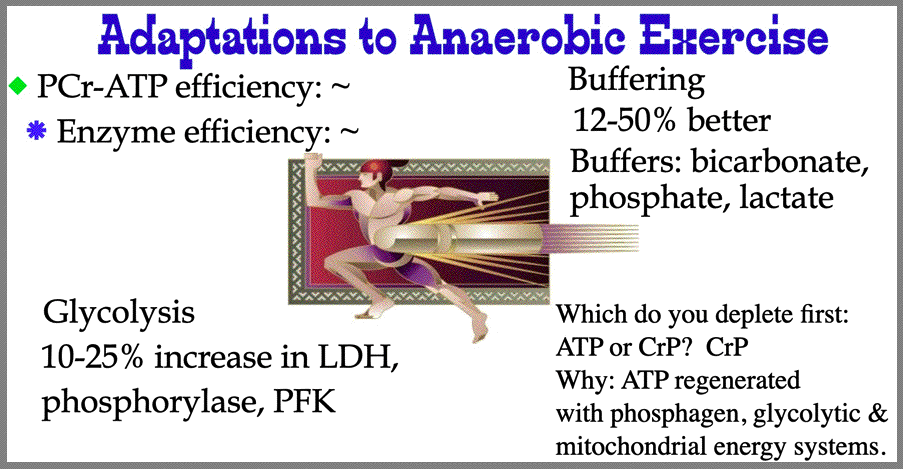| April 6 - April 10: VO2 Max and Metabolic Adaptations to Aerobic and Anaerobic Exercise OBJECTIVES: Be able to define VO2 max and why is it important. Be able to explain the criteria for VO2 max Be able to discuss the metaboiic adaptations to aerobic exercise Be able to discuss the metabolic adaptations to anaerobic exercise For Exam 3 Part A Click Here Let's start by watching this short Youtube video the explains VO2max and respiratory exchange ratio or RER. https://www.youtube.com/watch?v=dS9kOSn_IBQ Please now watch this short Youtube video that discusses maximal heart rate, ratings of perceived exertion (RPE), and plateau of less than or equal to 150 ml oxygen/min https://www.youtube.com/watch?v=5XRgtxNbisM&t=40s What is VO2 max (sometimes written VO2max) and why is it important? VO2 max, also called maximal aerobic capacity, is the maximal consumption, distribution and utilization of oxygen by the body. Understanding VO2 max tests a little deeper. Maximal aerobic capacity tests are often used in fitness setting to monitor change over time of the cardiorespiratory system. Certain exercise programs, such as high intensity interval training (HIIT) have been show to be most effective in improving VO2 max. Typically, in a laboratory setting the exercise physiologist will design a workload for the VO2max so the person attains it in 8-12 minutes. If the test goes longer than 12 minutes, the client may tire of exhaustion prior to attaining her/his actual VO2max. As well, there is a quite a bit of recent research that shows the higher your VO2 max, the lower your risk to cardiovascular disease. Therefore, the big takehome message for all people is regardless of your fitness level, try to keep improving your aerobic capacity for a healthier quality of life. Please learn the criteria for attaining VO2 max. In a laboratory testing situation there are some standardized criteria to verify whether a person has attained VO2max. These criteria include RER> 1.15, ±10 beats/min of predicted maximal heart rate (MHR), plateau of &Mac178; 150 ml oygen/minute and an RPE > 17. The theoretical limits of RER are from .7 to 1.0. What would be the estimated maximal heart rate (estimated MHR) for a 20 year-old male or female? Although there are several equations to predict maximal heart rate, we will use the equation of 220-AGE = Estimated maximal heart rate.Therefore, the estimated MHR for a 20 year-old male or female is 220-20 = 200 (Estimated MHR) With a VO2 peak, a person gives an 'all-out' effort during a maxial aerobic test, but doesn't attain any of the criteria. This is called a VO2 peak. Please examine the slide below defining VO2 max and the four established criteria to know if it has been attained. |
||||||||
 |
||||||||
| RER represents respiratory exchange ratio. This is the ratio of CO2 expired to O2 consumed Predicted (or estimated) maximum heart rate is 220-Age. So, a predicted maximum heart rate for a 20-year-old student is 220-20=200 beats per minute. Remeber, we look at heart rate in beats per minute. Plateau of VO2 means the following: A maximal aerobic test progressively gets harder for the sujbect. When the oxygen consumption (VO2) plateaus < 150 ml oxygen/min as the test continues to get harder it is a very good indicator that the subject is at or near their actual VO2max capacity (i.e, ceiling). Rating of Perceived Exertion (RPE). RPE is a person's subjective assessment of how hard they are working during an exercise bout.. We used a technique called 'anchoring,' which is explaind in one of your Youtube videos to each participants how to effective use the RPE chart (from 6 to 20). This RPE chart was developed by Dr. Gunnar Borg (some people to this day call it the Borg scale) Although VO2 peak (also written VO2peak) varies from textbook to textbook, for PEP326L a VO2 peak test is when a subject gives a maximal effort in an aerobic capacity test but does NOT attain any of the criteria. It means the subject worked as hard as she/he could, but did not attain any of the VO2max criteria. |
||||||||
|
|
||||||||
| What are the Metabolic Adaptations to Aerobic Exercise? | ||||||||
| Class, please watch this Youtube video which explains the metabolic adaptations to aerobic exercise. | ||||||||
| https://youtu.be/n_S4TptJ4Fk Class, below is a summary slide of metabolic adapations from aerobic exercise. |
||||||||
 |
||||||||
|
|
||||||||
| What are the Metabolic Adaptations to Anaerobic Exercise? |
||||||||
| Class, please watch this Youtube video which explains the metabolic adaptations to anaerobic exercise. |
||||||||
| https://youtu.be/UgP7bBZplwo Class, below is a summary slide of metabolic adapations from aerobic exercise. |
||||||||
 |
||||||||
| Exam 3 Part A: Click here to get questions: Exam 3 Part A is due by midnight on April 10. No late papers accepted. | ||||||||
|